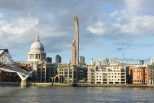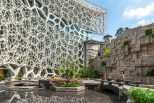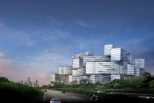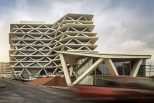An 80-story tower with a wooden structure. It's called Oakwood Tower and is the project presented by studio PLP…
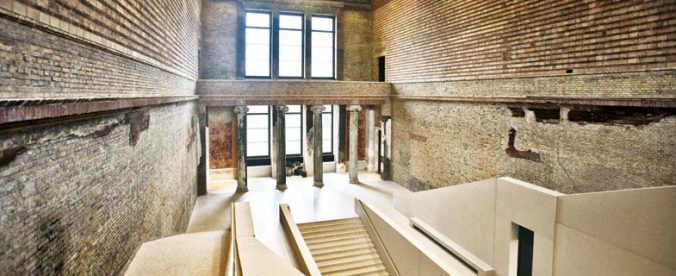
The project was the winner of an international competition in 1997. Today, after 11 years of work, the Neues Museum is now open, though the precious Egyptian collections and prehistoric relics will not arrive until the fall. This work completes that formidable citadel of culture composed of the Neues and the Alte National Galerie, the Bode Museum and the Pergamon Museum. The Neues is the last piece of what has been called a secular Acropolis, and it is the result of a reconstruction project that was presented to the populace – which diligently formed a line almost one kilometer in length – only as a structure, without exhibits, underscoring the value of a method, an architectural and ‘archeological’ approach that can be taken as an exemplary point of reference for the practice of ‘building on what has been built’.
 The architecture of the Neues, constructed in 1859 by Friedrich Stüler and originally conceived as an extension of the Altes Museum designed by his teacher, Karl Friedrick Schinkel, was severely damaged by allied bombing and then left in a state of ruin for many years in East Berlin. The architect has come to terms with these factors; instead of erasing the signs of this troubled history, in a stylistic reconstruction of ‘what it was, where it was’, Chipperfield has made these vicissitudes into ‘compositional elements’ of a detailed reconstruction project.
The architecture of the Neues, constructed in 1859 by Friedrich Stüler and originally conceived as an extension of the Altes Museum designed by his teacher, Karl Friedrick Schinkel, was severely damaged by allied bombing and then left in a state of ruin for many years in East Berlin. The architect has come to terms with these factors; instead of erasing the signs of this troubled history, in a stylistic reconstruction of ‘what it was, where it was’, Chipperfield has made these vicissitudes into ‘compositional elements’ of a detailed reconstruction project. While the long project history reflects a delicate capacity for reinterpretation of the finest romantic sensibility with respect to the theme of the ruin, in this case the ruin becomes a historical fragment, bearing real witness to the passage of time, in relation to eloquent, effective new parts, clear geometries that precisely, elegantly remove any temptation of imitation of the past.The formidable compositional collage created by the studios of Chipperfield and Julian Harrap reassembles fragments in a grand architectural organism, salvaging segments of plaster and frescoes that mingle with restored and reconstructed walls, columns bearing the signs of bullets, beautiful decorations broken by explosions and exposure to the elements. A pattern of pieces collected and catalogued to be reassembled, in a surprising harmonious synthesis with the ‘new’ (neues).
While the long project history reflects a delicate capacity for reinterpretation of the finest romantic sensibility with respect to the theme of the ruin, in this case the ruin becomes a historical fragment, bearing real witness to the passage of time, in relation to eloquent, effective new parts, clear geometries that precisely, elegantly remove any temptation of imitation of the past.The formidable compositional collage created by the studios of Chipperfield and Julian Harrap reassembles fragments in a grand architectural organism, salvaging segments of plaster and frescoes that mingle with restored and reconstructed walls, columns bearing the signs of bullets, beautiful decorations broken by explosions and exposure to the elements. A pattern of pieces collected and catalogued to be reassembled, in a surprising harmonious synthesis with the ‘new’ (neues). The lucid symmetrical tension of the large entrance staircase is like a programmatic statement, perfectly concluded by severe existing Doric columns. The complaints of purists are hard to grasp in this case: “the continuation of English bombing by other means”. Instead, in this project for Berlin we can see not only the successful reconstruction of a great work of architecture from the past, but also a new method of restoration, open to the messages of memory, projected toward an idea of modernity that replaces nostalgia with optimism.
The lucid symmetrical tension of the large entrance staircase is like a programmatic statement, perfectly concluded by severe existing Doric columns. The complaints of purists are hard to grasp in this case: “the continuation of English bombing by other means”. Instead, in this project for Berlin we can see not only the successful reconstruction of a great work of architecture from the past, but also a new method of restoration, open to the messages of memory, projected toward an idea of modernity that replaces nostalgia with optimism.

